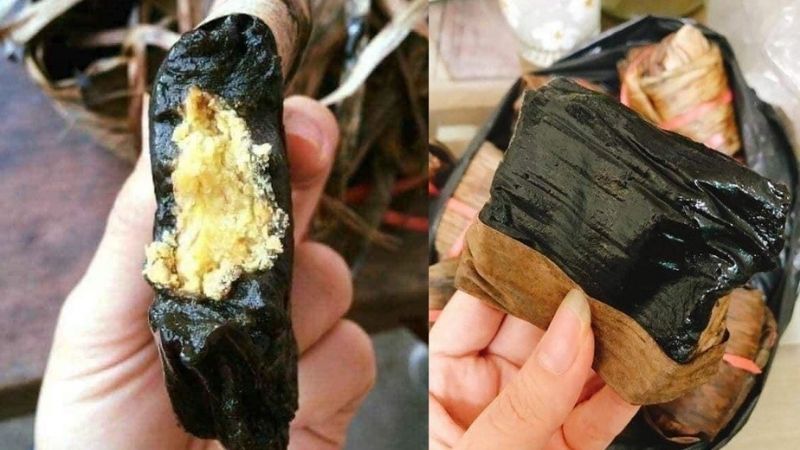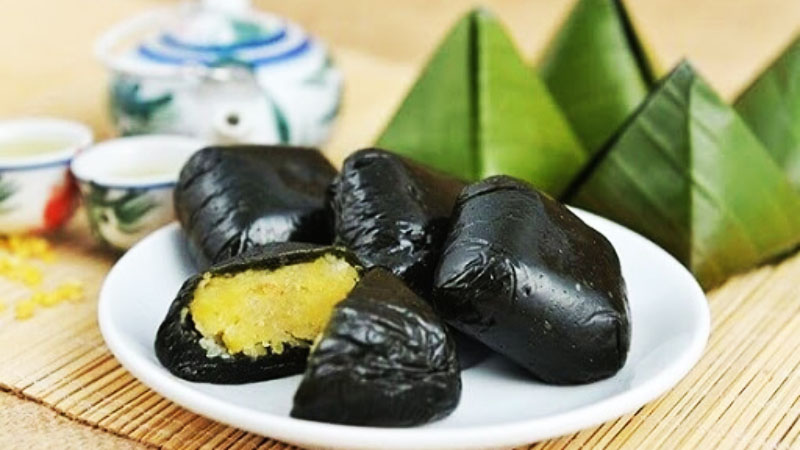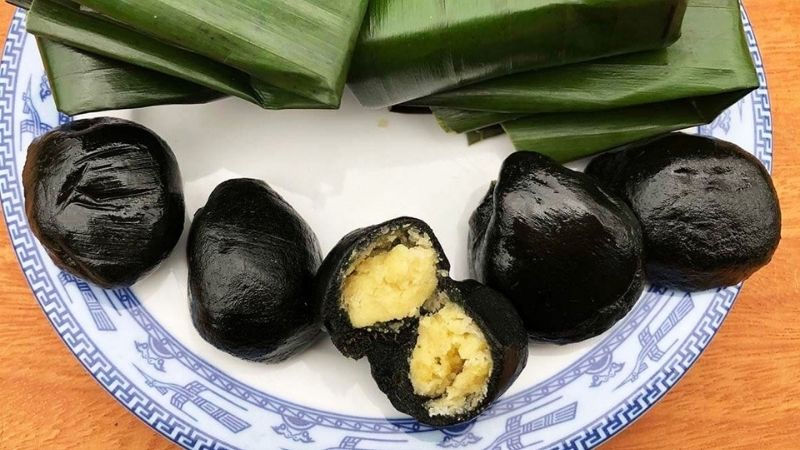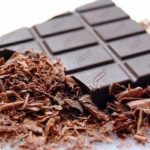Bánh Gai – A Delicious Vietnamese Treat: Nutrition and Calorie Count
1. What is Banh Gai?
 Banh Gai, a Traditional Vietnamese Treat
Banh Gai, a Traditional Vietnamese Treat
Banh Gai, also known as Banh La Gai, is a traditional Vietnamese delicacy, especially in the northern regions of the country. It is a square-shaped treat with a black outer layer made from rice flour and leaves of the Ramie plant, and a sweet filling made from mung beans, coconut, and other ingredients.
The unique black color of the outer layer comes from the combination of rice flour, Ramie leaves, and sugar, resulting in a soft and chewy texture. The filling, on the other hand, is a vibrant yellow, thanks to the use of mung beans, fresh coconut, and sugar, with some recipes also including pork fat for an extra indulgent touch.
Traditionally, Banh Gai is enjoyed during festive occasions and is often offered as a tribute to ancestors on ancestral altars.
2. Nutritional Value of Banh Gai
 Nutritional Breakdown of Banh Gai
Nutritional Breakdown of Banh Gai
According to the National Institute of Nutrition, Banh Gai boasts a calorie count of 250kcal per serving, and it also provides:
- 4,7
- 2.5g
- 51.95g
- 0.35g
- 239.50mg
- 44.30mg
- 0.56mg
While Banh Gai offers a good amount of nutrients and minerals that can boost immunity and reduce stress, it is important to remember that it also contains a significant amount of sugar. Therefore, it should be enjoyed in moderation as part of a balanced diet.
3. Calorie Count of Banh Gai
 Unraveling the Calorie Content of Banh Gai
Unraveling the Calorie Content of Banh Gai
The calorie count of Banh Gai can vary depending on the ingredients used and the portion size. Let’s break down the calorie content of its key ingredients:
Calories in Glutinous Rice:
The outer layer of Banh Gai is made primarily of glutinous rice, and on average, 100g of cooked glutinous rice contains approximately 300 calories.
Calories in Mung Beans:
Mung beans are a key ingredient in the filling, and 100g of this legume packs a punch with around 328 calories.
Taking these calorie counts into consideration, we can estimate that a 100g serving of Banh Gai, which typically includes 40g of rice, 30g of mung beans, and 10g of sugar, would provide approximately: 120 calories from rice + 98.4 calories from mung beans + 39 calories from sugar = 257.3 calories. This estimate may vary based on the specific recipe and portion size. For a larger serving of 200-300g, the calorie count would range from 514 to 771 calories.
4. Will Eating Banh Gai Make You Gain Weight?
 Understanding the Impact on Weight
Understanding the Impact on Weight
According to research, an adult’s daily calorie intake should be around 2000 kcal, with approximately 667 kcal per meal. A single serving of Banh Gai, weighing around 300 kcal, is unlikely to cause significant weight gain on its own.
In fact, one or two servings of this treat are usually enough to satisfy your hunger, providing around 608-912 calories. However, it’s important to remember that excessive consumption of Banh Gai, or any food for that matter, can lead to weight gain due to the excess intake of carbohydrates and sugar.
If you do indulge in a few too many Banh Gai, don’t worry! Simply balance it out by engaging in physical activities or exercises to burn off the extra calories.
5. Healthy Ways to Enjoy Banh Gai
 Tips for Enjoying Banh Gai Guilt-Free
Tips for Enjoying Banh Gai Guilt-Free
Treat it as a Snack:
With its high starch and sugar content, Banh Gai can be a delicious and satisfying snack option. Opting for a small serving of Banh Gai as a snack can help curb your cravings without overindulging.
Consider Your Daily Calorie Needs:
As mentioned, the average daily calorie requirement for an adult is around 2000 calories. This means that you should aim for a maximum of 667 calories per meal to maintain a balanced diet.
Plan Your Meals Accordingly:
If you’re including Banh Gai in your meal, be mindful of the portion size. To feel satisfied, you might need around 2-3 pieces, totaling approximately 1000 calories.
We hope this information has shed some light on the nutritional aspects of Banh Gai and answered your question about its potential impact on weight gain. Feel free to share your thoughts or leave a comment if you have any further queries.
Source: Hanoi Department of Health
What You Need to Know About Chocolate
Despite its tasty flavor, there are long-standing concerns that eating too much chocolate may lead to weight gain and tooth decay. Despite this, chocolate continues to be a popular indulgence during holidays and a meaningful gift to share with loved ones. It is also a popular ingredient for beauty treatments.



































